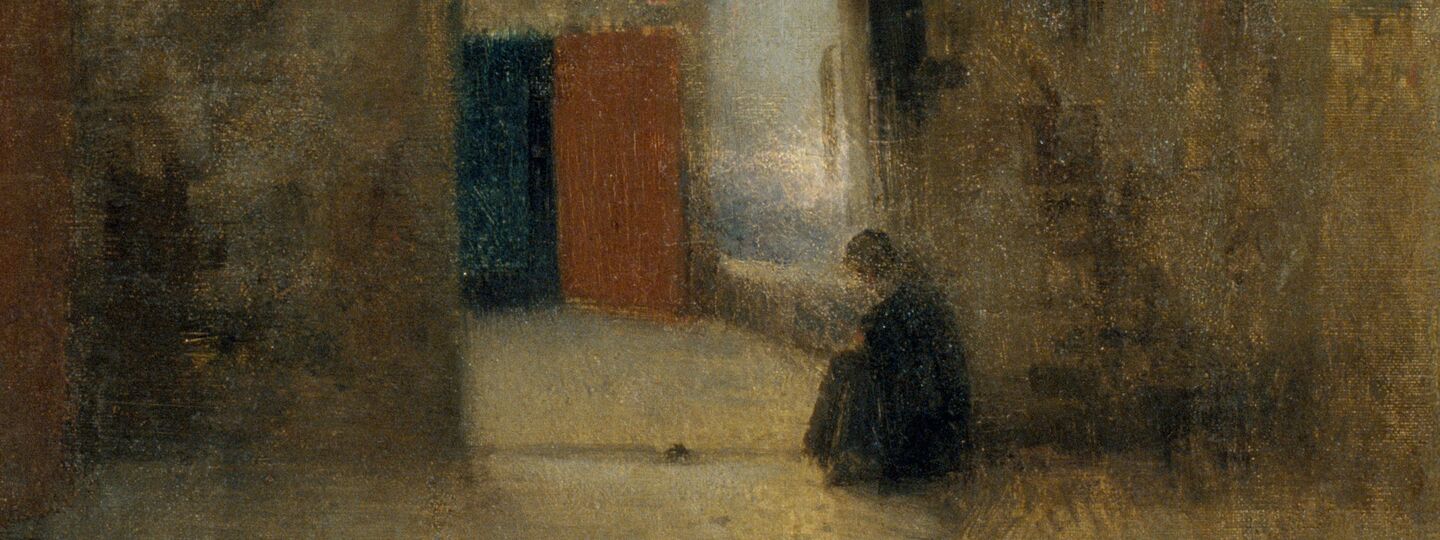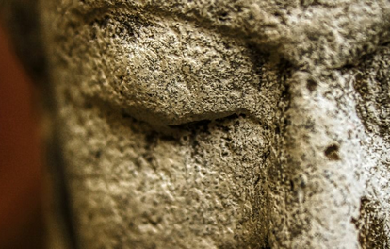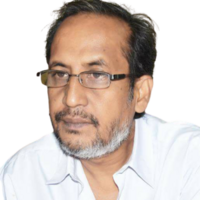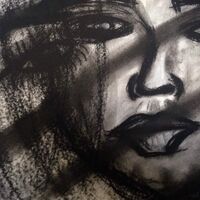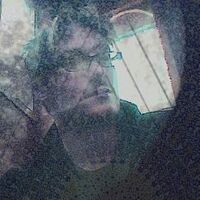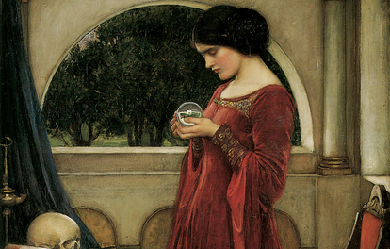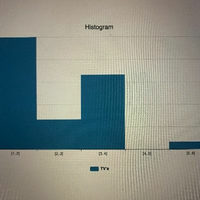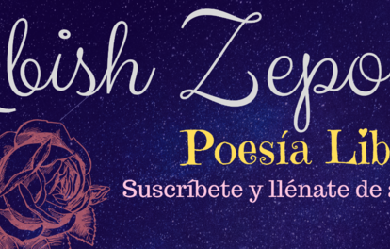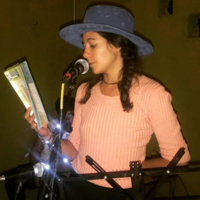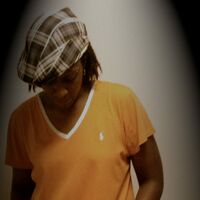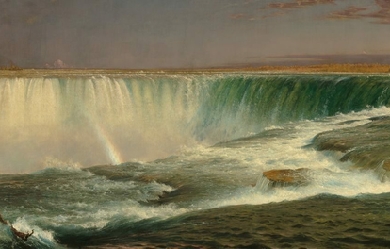
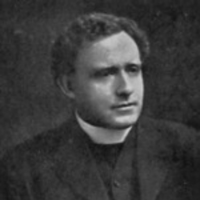
Rev. James Bernard Dollard ("Father Dollard") (1872–1946) was a Roman Catholic parish priest and noted poet. Life He was born at Mooncoin, County Kilkenny, Ireland, August 30, 1872, to Michael and Anastasia (Quinn) Dollard, the youngest son in a large family. After taking the course in Classics at Kilkenny College, he sailed in 1890 for New Brunswick, Canada. He graduated from the Grand Seminary of Montreal and received from Laval University the degrees of Bachelor of Theology and Bachelor of Canon Law. The same university conferred on him in 1916, the honorary degree of Litt.D. He was ordained to the priesthood in December 1896. He served as a curate in St. Helen’s Church, and St. Mary’s Church, Toronto, and for nine years, parish priest of Uptergrove, Ontario before he became the parish priest of St. Monica’s Church, North Toronto. He published two volumes of poems Irish Mist and Sunshine (1902) and Poems (1910), and a volume of short stories entitled The Gaels of Moondharrig. He sometimes wrote under the pseudonym of Sliav-na-mon. In a lecture on “The War and the Poets,” delivered in Toronto, 1916, Mr. Joyce Kilmer, poetry editor of the Literary Digest, declared that Father Dollard’s sonnet was the best poem that had appeared on the death of Rupert Brooke. He died in 1946. References Wikipedia—https://en.wikipedia.org/wiki/James_B._Dollard
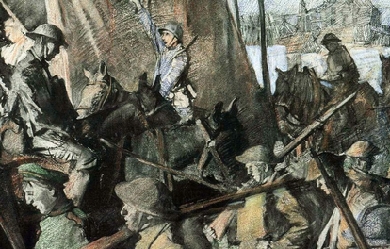
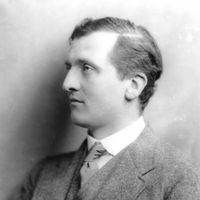
Thomas Ernest Hulme (16 September 1883– 28 September 1917) was an English critic and poet who, through his writings on art, literature and politics, had a notable influence upon modernism. He was an aesthetic philosopher and the 'father of imagism’. Early life Hulme was born at Gratton Hall, Endon, Staffordshire, the son of Thomas and Mary Hulme. He was educated at Newcastle-under-Lyme High School, and from 1902, St John’s College, Cambridge, where he read mathematics, but was sent down in 1904 after rowdy behaviour on Boat Race night. He was thrown out of Cambridge a second time after a scandal involving a Roedean girl. He returned to his studies at University College, London before travelling around Canada and spending time in Brussels acquiring languages. Proto-modernist From about 1907 Hulme became interested in philosophy, translating works by Henri Bergson and sitting in on lectures at Cambridge. He translated Georges Sorel’s Reflections on Violence. The most important influences on his thought were Bergson, who asserted that 'human experience is relative, but religious and ethical values are absolute’ and, later, Wilhelm Worringer (1881–1965), German art historian and critic - in particular his Abstraktion und Einfühlung (Abstraction and Empathy, 1908). Hulme was influenced by Remy de Gourmont’s aristocratic concept of art and his studies of sensibility and style. From 1909 Hulme contributed critical articles to The New Age, edited by A. R. Orage. Hulme developed an interest in poetry and wrote a small number of poems. He was made secretary of the Poets’ Club, attended by such establishment figures as Edmund Gosse and Henry Newbolt. There he encountered Ezra Pound and F. S. Flint. In late 1908 Hulme delivered his paper A Lecture on Modern Poetry to the club. Hulme’s poems Autumn and City Sunset, both published in 1909 in a Poets’ Club anthology, have the distinction of being the first Imagist poems. A further five poems were published in The New Age in 1912 as The Complete Poetical Works of T.E. Hulme. Despite this misleading title, Hulme in fact wrote about 25 poems totalling some 260 lines, of which the majority were possibly written between 1908–1910. Robert Frost met Hulme in 1913 and was influenced by his ideas. The publisher of the book 'Ripostes’ (to which Pound appended the 'complete’ poetical works of T. E. Hulme) spoke in that book of Hulme ‘the meta-physician, who achieves great rhythmical beauty in curious verse-forms.’ In his critical writings Hulme distinguished between Romanticism, a style informed by a belief in the infinite in man and nature, characterised by Hulme as “spilt religion”, and Classicism, a mode of art stressing human finitude, formal restraint, concrete imagery and, in Hulme’s words, “dry hardness”. Similar views were later expressed by T.S. Eliot. Hulme’s ideas had a major effect on Wyndham Lewis (quite literally when they came to blows over Kate Lechmere; Lewis ended the worse for it, hung upside down by the cuffs of his trousers from the railings of Great Ormond Street). He championed the art of Jacob Epstein and David Bomberg, was a friend of Gaudier-Brzeska, and was in on the debut of Lewis’s literary magazine BLAST and vorticism. Hulme’s politics were conservative, and he moved further to the right after 1911 as a result of contact with Pierre Lasserre, who was associated with Action Française. First World War Hulme volunteered as an artilleryman in 1914 and served with the Honourable Artillery Company and later the Royal Marine Artillery in France and Belgium. He kept up his writing for The New Age. Notable publications during this period for that magazine were “War Notes,” written under the pen name “North Staffs”, and “A Notebook”, which contains some of his most organised critical writing. He was wounded in 1916. Back at the front in 1917, he was killed by a shell at Oostduinkerke near Nieuwpoort, in West Flanders. [...] On 28 September 1917, four days after his thirty-fourth birthday, Hulme suffered a direct hit from a large shell which literally blew him to pieces. Apparently absorbed in some thought of his own he had failed to hear it coming and remained standing while those around threw themselves flat on the ground. What was left of him was buried in the Military Cemetery at Koksijde, West-Vlaanderen, in Belgium where—no doubt for want of space—he is described simply as 'One of the War poets’.” Works * Notes on Language and Style (1929, University of Washington Book Store); in The Criterion, Vol. 3, No. 12, (July 1925) (ed. T.S. Eliot) * Speculations: Essays on Humanism and the Philosophy of Art (1936, K. Paul, Trench, Trubner & Co., Ltd.), edited by Herbert Read * Further Speculations of T. E. Hulme (1955, University of Minnesota), edited by Samuel Hynes * The Collected Writings of T. E. Hulme (1996, OUP), edited by Karen Csengeri * Selected Writings of T. E. Hulme (2003, Fyfield Books), edited by Patrick McGuinness Selected poems * Above the Dock * Autumn * A City Sunset * Conversion * The Embankment * Mana Aboda * The Man in the Crow’s Nest * Susan Ann and Immortality * The Poet * A Tall Woman * A Sudden Secret * In the Quiet Land * At Night! * Town Sky-line As translator * Henri Bergson, An Introduction to Metaphysics, (1912) * Georges Sorel, Reflections on Violence, (1915) Articles References Wikipedia—https://en.wikipedia.org/wiki/T._E._Hulme
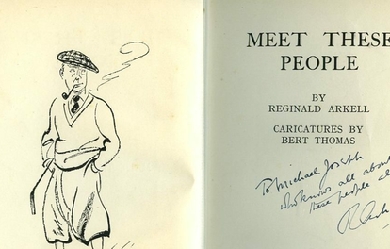

Reginald Arkell (1882–1959) was a British script writer and comic novelist who wrote many musical plays for the London theatre. The most popular of those was an adaptation of the spoof history book 1066 and All That: 1066—and all that: A Musical Comedy based on that Memorable History by Sellar and Yeatman. He was the author of A Cottage in the Country and the Green Fingers series of garden verse. Arkell was born on 14 October 1882 at Lechlade, Gloucestershire, England, was educated at Burford Grammar School and trained as a journalist. He married actress Elizabeth Evans in 1912. During the First World War he served with the King’s Own Yorkshire Light Infantry and The Norfolk Regiment. Arkell died on 1 May 1959 at Cricklade, England. Works * The Round House (1958) (novel) * Charley Moon (1953) (novel) Published by Michael Joseph Ltd. * “Trumpets Over Merriford” (1955), American title: The Miracle Of Merriford (1956) (novel) * Collected Green Fingers (1956) (poems) * Come to the ball; or, Harlequin (1951) (adaptation of Johann Strauss II’s Die Fledermaus) * Old Herbaceous (1950, republished 2002) * Green fingers Again (1942) (poems) * War Rumours (1939) (verse, illustrated by Edgar Norfield) * Percy Ponsonby (1939) (TV series) * 1066 And All That (1939) (TV version) * The Street Singer or Interval for Romance (1937) (film musical which starred Arthur Tracy) * Smash and Grab (1937) (film) * Green fingers, and other poems (1934) (includes Roses at Owlpen) * The Last Waltz (1936) (film of the musical comedy) * 1066 And All That (1935) (revue) * A Kingdom for a Cow (1935) (adaptation of Kurt Weill’s operetta Der Kuhhandel) * Playing the Games (1935) (humour) * Bridge Without Sighs (1934) (A Harmless Handbook to the game, written in rhyme) * Richard Jefferies (1933) (biography) * Winter Sportings (1929) * Meet These People (1928) - Poetry with caricatures by Bert Thomas. Published by Herbert Jenkins. * Columbine– A Fantasy of Summertime (1928) (adaptation for radio) * The Blue Train (1927) (musical, music by Robert Stolz, additional lyrics by Ivy St. Helier) * Frasquita (1925) (operetta, music by Franz Lehár) * Our Nell (1924) (musical play, music by Ivor Novello and Harold Fraser-Simson) * The tragedy of Mr. Punch (1923) (play) * Columbine (1922) (play) * Catherine (1922) (musical play, music by Tchaikovsky) * The Last Waltz (1922) (musical comedy, music by Oscar Straus) * All the Rumors (1916) (contains the poem Actual Evidence I Have None... Published by Duckworth & Company, 1916 - World War, 1914-1918 - 47 pages) * The Holidays (Children’s poem in The Captain Dec 1910) Old Herbaceous * Old Herbaceous is a classic British novel of the garden, with a title character as outsized and unforgettable as P. G. Wodehouse’s immortal manservant, Jeeves. Born at the dusk of the Victorian era, Bert Pinnegar, an awkward orphan child with one leg a tad longer than the other, rises from inauspicious schoolboy days spent picking wildflowers and dodging angry farmers to become the legendary head gardener “Old Herbaceous,” the most esteemed flower-show judge in the county and a famed horticultural wizard capable of producing dazzling April strawberries from the greenhouse and the exact morning glories his Lady spies on the French Riviera, “so blue, so blue it positively hurts.” * Sprinkled with nuggets of gardening wisdom, Old Herbaceous is a witty comic portrait of the most archetypal—and crotchety—head gardener ever to plant a row of bulbs at a British country house. External links * Works by Reginald Arkell at Faded Page (Canada) * BBC page on Percy Ponsonby * Reginald Arkell on Internet Movie Database References Wikipedia—https://en.wikipedia.org/wiki/Reginald_Arkell

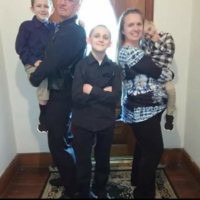
I'm happily married to the love of my life, William Williams. We met thru poetry on Facebook. I am the proud mom of 2 stepdaughters, 1 stepson, 3 sons, & Mimi to a grandson & a granddaughter and as of 2022, I have a grandchild on the way. I have 4 brothers, 4 sisters-in-law & 1 brother-in-law.
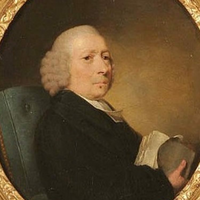
Richard Jago (1 October 1715– 8 May 1781) was an English clergyman poet and minor landscape gardener from Warwickshire. Although his writing was not highly regarded by contemporaries, some of it was sufficiently novel to have several imitators. Life Richard Jago was the third son of the Rector of Beaudesert, Warwickshire, and was named after him. His father’s family was of Cornish origin, while his mother was from the immediately adjoining village of Henley in Arden. He was educated at Solihull School, where one of its five houses is now named after him. While there he formed a lifelong friendship with William Shenstone. In 1732, he went up to University College, Oxford and while there Shenstone made him acquainted with other students with a literary taste. He took his master’s degree 9 July 1738, having entered into the church the year before, and served the curacy of Snitterfield, Warwickshire, near Stratford upon Avon. In 1744, he married Dorothea Susanna Fancourt, daughter of the rector of Kimcote in Leicestershire, whom he had known from her childhood. In 1751 his wife died, leaving him with the care of seven very young children. Three of these were boys, who predeceased him, but he was eventually survived by three of his daughters. In 1759, he married a second wife, Margaret Underwood, but had no children by her. Jago had become vicar of Harbury in 1746, and shortly after of Chesterton, both in Warwickshire. Through aristocratic patrons, he was given the living of Snitterfield in 1754, and later was presented with his former father-in-law’s living in Kimcote in 1771, after which he resigned the livings of Harbury and Chesterton, keeping the others. Snitterfield remained his favourite residence and it was there that he would die at the age of 66. Jago shared with Shenstone an interest in landscape gardening and occupied himself with making improvements to the Snitterfield vicarage garden. Both became part of the likeminded circle about Henrietta Knight, Lady Luxborough which also included other literary friends, William Somervile and Richard Graves, rector of Claverton. Shenstone dedicated a bench to Jago at the end of the viewing circuit near his house, The Leasowes, and both dedicated poems to each other. Poetry Jago’s first independent publications were two sermons. The first, “The Cause of Impenitence Considered” (1755), was published for the benefit of Harbury Free School; the second was a funeral sermon, “The nature and grounds of a Christian’s happiness in and after death” (1763). Shenstone’s letters mention an Essay on Electricity written by Jago, written in 1747, but this seems to have remained unpublished. Poems of his were also beginning to appear in Robert Dodsley’s anthologies, Collection of Poetry by several hands, among which the sentimental elegy “The Blackbirds” had made something of a stir after it first appeared in the ephemeral magazine The Adventurer in 1753. This was a lament on the death of a self-sacrificing blackbird and was shortly followed by similar poems on goldfinches and swallows. They were particularly praised by Dr. John Aikin in his “Essay on the application of Natural History to poetry”, who also noted that there were soon imitations among other minor poets, including Samuel Jackson Pratt’s “The Partridges, an elegy” (1771) and James Graeme’s “The Linnet” (1773). Jago’s most ambitious publication was the four-part topographical poem, Edge Hill, or the rural prospect delineated and moralised (1767). It was written in blank verse and was once described as “the most elaborate local poem in our language”. The poet takes his stance on the hill in the morning, facing south-west (book 1); at noon he is on Ratley Hill in the centre (books 2–3) and then moves along the ridge to look north-east at evening. The poem intermingles description with legendary, historical and antiquarian particulars, principally the battle at the start of the English Civil War. Imaginary excursions are made to Warwick, Coventry, Kenilworth, Solihull, and industrial Birmingham (under the name Bremicham), as well as many “flattering descriptions of all the great houses and seats of important people which come within his survey”. Local rivers are also included and even the nearby canal on which “sooty barks pursue their liquid track”. There are many digressions as well, including descriptions of industrial processes and of the nature of vision and the working of the telescope. The critic already quoted finds the poem “really interesting; with the scene before us, it is impossible not to admire the ingenuity and scrupulous thoroughness with which the author has performed his task,” although ultimately it is lacking in poetic execution. The Cambridge History of English and American Literature judges that "his catalogues have little picturesqueness or colour; while his verse, although it is not without the accent of local association, is typical, as a whole, of the decadence of the Miltonic method of natural description in the 18th century. Every group of trees is a grove, every country house a dome, and every hill a precipice". Particular examples of hackneyed diction include Latin-derived adjectives, as in “Honington’s irriguous meads”, or else 18th century circumlocutions such as “the woolly tribes” when sheep are meant. Nevertheless, the poem seems to have inspired the writing of the much shorter and simpler “Ode to Lansdowne Hill” (1785), which celebrates the site of another Civil War battle. In the following year Jago published “Labour and Genius, or the mill-stream and the cascade”, a humorous fable in octosyllabic verse written in memory of William Shenstone and his landscaped grounds at the Leasowes. Poems of lesser significance appeared here and there and Jago was working on a revised edition of his collected poems just before his death. This appeared posthumously as Poems, Moral and Descriptive in 1784. Included there was another homage to Milton in the oratorio “Adam, or the fatal disobedience, compiled from Milton’s Paradise Lost and adapted to music”. The rhymed choruses there were of Jago’s composition, but the main body of the work is adapted directly from Paradise Lost. Though it found no composer to set it, another of Jago’s pieces did. This was the “Roundelay for the Stratford Jubilee” organised by David Garrick in 1769, which was set for singing by Charles Dibdin. One other humorous piece also found an imitator. In Jago’s “Hamlet’s soliloquy imitated”, a minor poet agonises over whether “to print or not to print” and run the danger, by submitting his verses to Dodsley, to “lose the name of author”. A subsequent parody titled “The Presbyterian parson’s soliloquy” over the question to “conform or not conform” appeared in The Hibernian Magazine in 1774 and was often reprinted thereafter, ascribed to Samuel Badcock. One later commentator gave it as his opinion that “the hint of this parody was probably borrowed from Mr Jago’s”. Slight Jago’s output may have been, but it appears to have been influential in its time. References Wikipedia—https://en.wikipedia.org/wiki/Richard_Jago
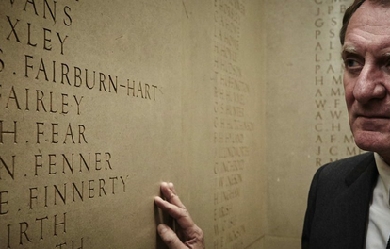
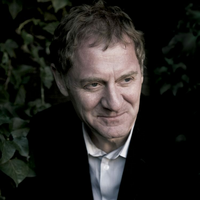
Sir Andrew Motion FRSL (born 26 October 1952) is an English poet, novelist, and biographer, who was Poet Laureate of the United Kingdom from 1999 to 2009. During the period of his laureateship, Motion founded the Poetry Archive, an online resource of poems and audio recordings of poets reading their own work. In 2012, he became President of the Campaign to Protect Rural England, taking over from Bill Bryson. Early life Motion was born on 26 October 1952 in London; his mother was Catherine Gillian Bakewell (known as Gillian) and his father Andrew Richard Michael Motion (known as Richard). The family moved to Stisted, near Braintree in Essex, when Motion was 12 years old. Motion went to boarding school from the age of seven joined by his younger brother. Most of the boy’s friends were from the school and when Motion was in the village he spent a lot of time on his own. He began to have an interest and affection for the countryside and he went for walks with a pet dog. Later he went to Radley College, where, in the sixth form, he encountered Peter Way, an inspiring English teacher who introduced him to poetry– first Hardy, then Philip Larkin, W. H. Auden, Heaney, Hughes, Wordsworth and Keats. When Motion was 17 years old, his mother had a horse riding accident and suffered a serious head injury requiring a life-saving neurosurgery operation. She regained some speech, but she was severely paralysed and remained in and out of coma for nine years. She died in 1978 and her husband died of cancer in 2006. Motion has said that he wrote to keep his memory of his mother alive and that she was a muse of his work. When Motion was about 18 years old he moved away from the village to study English at University College, Oxford; however, since then he has remained in contact with the village to visit the church graveyard, where his parents are buried, and also to see his brother, who lives nearby. At University he studied at weekly sessions with W. H. Auden, whom he greatly admired. Motion won the university’s Newdigate Prize and graduated with a first class honours degree. Career Between 1976 and 1980, Motion taught English at the University of Hull and while there, at age 24, he had his first volume of poetry published. At Hull he met university librarian and poet Philip Larkin. Motion was later appointed as one of Larkin’s literary executors which would privilege Motion’s role as his biographer following Larkin’s death in 1985. In Philip Larkin: A Writer’s Life, Motion says that at no time during their nine-year friendship did they discuss writing his biography and it was Larkin’s longtime companion Monica Jones who requested it. He reports how, as executor, he rescued many of Larkin’s papers from imminent destruction following his friend’s death. His 1993 biography of Larkin, which won the Whitbread Prize for Biography, was responsible for bringing about a substantial revision of Larkin’s reputation. Motion was Editorial Director and Poetry Editor at Chatto & Windus (1983–89), he edited the Poetry Society’s Poetry Review from 1980–1982 and succeeded Malcolm Bradbury as Professor of Creative Writing at the University of East Anglia. He is now on the faculty at the Johns Hopkins Writing Seminars. Laureateship Motion was appointed Poet Laureate on 1 May 1999, following the death of Ted Hughes, the previous incumbent. The Nobel Prize-winning Northern Irish poet and translator Seamus Heaney had ruled himself out for the post. Breaking with the tradition of the laureate retaining the post for life, Motion stipulated that he would stay for only ten years. The yearly stipend of £200 was increased to £5,000 and he received the customary butt of sack. He wanted to write “poems about things in the news, and commissions from people or organisations involved with ordinary life,” rather than be seen a 'courtier’. So, he wrote "for the TUC about liberty, about homelessness for the Salvation Army, about bullying for ChildLine, about the foot and mouth outbreak for the Today programme, about the Paddington rail disaster, the 11 September attacks and Harry Patch for the BBC, and more recently about shell shock for the charity Combat Stress, and climate change for the song cycle he finished for Cambridge University with Peter Maxwell Davies.” On 14 March 2002, as part of the 'Re-weaving Rainbows’ event of National Science Week 2002, Motion unveiled a blue plaque on the front wall of 28 St Thomas Street, Southwark, to commemorate the sharing of lodgings there by John Keats and Henry Stephens while they were medical students at Guy’s and St Thomas’ Hospital in 1815–16. In 2003, Motion wrote Regime change, a poem in protest at Invasion of Iraq from the point of view of Death walking the streets during the conflict, and in 2005, Spring Wedding in honour of the wedding of the Prince of Wales to Camilla Parker Bowles. Commissioned to write in the honour of 109-year-old Harry Patch, the last surviving “Tommy” to have fought in World War I, Motion composed a five-part poem, read and received by Patch at the Bishop’s Palace in Wells in 2008. As laureate, he also founded the Poetry Archive, an on-line library of historic and contemporary recordings of poets reciting their own work. Motion remarked that he found some of the duties attendant to the post of poet laureate difficult and onerous and that the appointment had been "very, very damaging to [his] work". The appointment of Motion met with criticism from some quarters. As he prepared to stand down from the job, Motion published an article in The Guardian that concluded, "To have had 10 years working as laureate has been remarkable. Sometimes it’s been remarkably difficult, the laureate has to take a lot of flak, one way or another. More often it has been remarkably fulfilling. I’m glad I did it, and I’m glad I’m giving it up– especially since I mean to continue working for poetry." Motion spent his last day as Poet Laureate holding a creative writing class at his alma mater, Radley College, before giving a poetry reading and thanking Peter Way, the man who taught him English at Radley, for making him who he was. Carol Ann Duffy succeeded him as Poet Laureate on 1 May 2009. Post-laureateship Motion is Chairman of the Arts Council of England’s Literature Panel (appointed 1996) and is also a Fellow of the Royal Society of Literature. In 2003, he became Professor of Creative Writing at Royal Holloway, University of London. Since July 2009, Motion has been Chairman of the Museums, Libraries and Archives Council (MLA) appointed by the Department for Culture, Media and Sport. He is also a Vice-President of the Friends of the British Library, a charity which provides funding support to the British Library. He was knighted in the 2009 Queen’s Birthday Honours list. He has been a member of English Heritage’s Blue Plaques Panel since 2008. Motion was selected as jury chair for the Man Booker Prize 2010 and in March 2010, he announced that he was working with publishers Jonathan Cape on a sequel to Robert Louis Stevenson’s Treasure Island. Entitled Silver, the story is set a generation on from the original book and was published in March 2012. In July 2010, Motion returned to Kingston-upon-Hull for the annual Humber Mouth literature festival and taking part in the Larkin 25 festival commemorating the 25th anniversary of Philip Larkin’s death. In his capacity as Larkin’s biographer and as a former lecturer in English at the University of Hull, Motion named an East Yorkshire Motor Services bus Philip Larkin. Motion’s debut play Incoming, about the war in Afghanistan, premièred at the High Tides Festival in Halesworth, Suffolk in May 2011. Motion also featured in Jamie’s Dream School in 2011 as the poetry teacher. In June 2012, he became the President of the Campaign to Protect Rural England. In March 2014 he was elected an Honorary Fellow at Homerton College, Cambridge. Motion won the 2015 Ted Hughes Award for new work in poetry for the radio programme Coming Home. The production featured poetry by Motion based on recordings he made of British soldiers returning from the wars in Iraq and Afghanistan. Work Motion has said of himself: “My wish to write a poem is inseparable from my wish to explain something to myself.” His work combines lyrical and narrative aspects in a “postmodern-romantic sensibility”. Motion says that he aims to write in clear language without tricks. The Independent describes the stalwart poet as the “charming and tireless defender of the art form”. Motion has won the Arvon Prize, the John Llewellyn Rhys Prize, Eric Gregory Award, Whitbread Prize for Biography and the Dylan Thomas Prize. Motion took part in the Bush Theatre’s 2011 project Sixty-Six Books, writing and performing a piece based upon a book of the King James Bible. Personal life Motion’s marriage to Joanna Powell ended in 1983. He was married to Jan Dalley from 1985 to 2009, divorcing after a seven-year separation. They had one son born in 1986 and twins, a son and a daughter, born in 1988. In 2009 he married Kyeong-Soo Kim. They live in Baltimore, Maryland. Selected honours and awards 1975: won the Newdigate prize for Oxford undergraduate poetry 1976: Eric Gregory Award 1981: wins Arvon Foundation’s International Poetry Competition with The Letter 1984: John Llewellyn Rhys Prize for Dangerous Play: Poems 1974–1984 1986: Somerset Maugham Award for The Lamberts 1987: Dylan Thomas Prize for Natural Causes 1999: appointed Poet Laureate for ten years 1994: Philip Larkin: A Writer’s Life, Whitbread Prize for Biography 2009: Knighthood 2014: Wilfred Owen Poetry Award Selected works Poetry collections * 1972: Goodnestone: a sequence. Workshop Press * 1976: Inland. Cygnet Press * 1977: The Pleasure Steamers. Carcanet * 1981: Independence. Salamander Press * 1983: Secret Narratives. Salamander Press * 1984: Dangerous Play: Poems 1974–1984. Salamander Press / Penguin * 1987: Natural Causes. Chatto & Windus * 1988: Two Poems. Words Ltd * 1991: Love in a Life. Faber and Faber * 1994: The Price of Everything. Faber and Faber * 1997: Salt Water Faber and Faber * 1998: Selected Poems 1976–1997. Faber and Faber * 2001: A Long Story. The Old School Press * 2002: Public Property. Faber and Faber * 2009: The Cinder Path. Faber and Faber * 2012: The Customs House. Faber and Faber * 2015: Peace Talks. Faber and Faber * 2015: Coming Home. Published by Andrew J Moorhouse at Fine Press Poetry http://www.finepresspoetry.com Criticism * 1980: The Poetry of Edward Thomas. Routledge & Kegan Paul * 1982: Philip Larkin. (Contemporary Writers series) Methuen * 1986: Elizabeth Bishop. (Chatterton Lectures on an English Poet) * 1998: Sarah Raphael: Strip!. Marlborough Fine Art (London) * 2008: Ways of Life: On Places, Painters and Poets. Faber and Faber Biography and memoir * 1986: The Lamberts: George, Constant and Kit. Chatto & Windus * 1993: Philip Larkin: A Writer’s Life. Faber and Faber * 1997: Keats: A Biography. Faber and Faber * 2006: In the Blood: A Memoir of my Childhood. Faber and Faber Fiction * 1989: The Pale Companion. Penguin * 1991: Famous for the Creatures. Viking * 2003: The Invention of Dr Cake. Faber and Faber * 2000: Wainewright the Poisoner: The Confessions of Thomas Griffiths Wainewright (biographical novel) * 2012: Silver. Jonathan Cape Edited works, introductions, and forewords * 1981: Selected Poems: William Barnes. Penguin Classics * 1982: The Penguin Book of Contemporary British Poetry with Blake Morrison. Penguin * 1994: Thomas Hardy: Selected Poems. Dent * 1993: New Writing 2 (With Malcolm Bradbury). Minerva in association with the British Council * 1994: New Writing 3 (With Candice Rodd). Minerva in association with the British Council * 1997: Penguin Modern Poets: Volume 11 with Michael Donaghy and Hugo Williams. Penguin * 1998: Take 20: New Writing. University of East Anglia * 1999: Verses of the Poets Laureate: From John Dryden to Andrew Motion. With Hilary Laurie. Orion. * 1999: Babel: New Writing by the University of East Anglia’s MA Writers. University of East Anglia. * 2001: Firsthand: The New Anthology of Creative Writing from the University of East Anglia. University of East Anglia * 2002: Paper Scissors Stone: New Writing from the MA in Creative Writing at UEA. University of East Anglia. * 2001: The Creative Writing Coursebook: Forty Authors Share Advice and Exercises for Fiction & Poetry. With Julia Bell. Macmillan * 2000: John Keats: Poems Selected by Andrew Motion. Faber and Faber * 2001: Here to Eternity: An Anthology of Poetry. Faber and Faber * 2002: The Mays Literary Anthology; Guest editor. Varsity Publications * 2003: 101 Poems Against War . Faber and Faber (Afterword) * 2003: First World War Poems. Faber and Faber * 2006: Collins Rhyming Dictionary. Collins * 2007: Bedford Square 2: New Writing from the Royal Holloway Creative Writing Programme. John Murray Ltd. References Wikipedia—https://en.wikipedia.org/wiki/Andrew_Motion
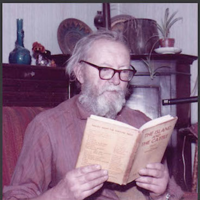
Nicholas Moore (16 November 1918 – 26 January 1986) was an English poet, associated with the New Apocalyptics in the 1940s, whose reputation stood as high as Dylan Thomas’s. He later dropped out of the literary world. Moore was born in Cambridge, England, the elder child of the philosopher G. E. Moore and Dorothy Ely. His paternal uncle was the poet, artist and critic Thomas Sturge Moore, and his brother was the composer Timothy Moore (1922-2003). He was educated at the Dragon School in Oxford, Leighton Park School in Reading, the University of St Andrews in Scotland, and Trinity College in Cambridge. Moore was editor and co-founder of a literary review, Seven (1938–40), while still an undergraduate. Seven, Magazine of People's Writing, had a complex later history: Moore edited it with John Goodland; it later appeared edited by Gordon Cruikshank, and then by Sydney D. Tremayne, after Randall Swingler bought it in 1941 from Philip O'Connor. While in Cambridge Moore became closely involved with literary London, in particular Tambimuttu. He published pamphlets under the Poetry London imprint in 1941 (of George Scurfield, G. S. Fraser, Anne Ridler and his own work). This led to Moore becoming Tambimuttu's assistant. Moore later worked for the Grey Walls Press. The Glass Tower, a selected poems collection from 1944, appeared with illustrations by the young Lucian Freud. In 1945 he edited The PL Book of Modern American Short Stories, and won Contemporary Poetry's Patron Prize (judged that year by W. H. Auden) for Girl with a Wine Glass. In 1947 he won the Harriet Monroe Memorial Prize for Girls and Birds and various other poems. Later Moore encountered difficulty in publishing; he was in the unusual position for a British poet of having a higher reputation in the USA. His association with the "romantics" of the 1940s was, in fact, rather an inaccurate reflection of his style. In the 1950s he worked as a horticulturist, writing a book The Tall Bearded Iris (1956). In 1968 he entered 31 separate pseudonymous translations of a single Baudelaire poem, in a competition for the Sunday Times, run by George Steiner. Each translation focused on a different element of the poem: rhyme, pattern, tropes, symbolism, etc. producing vastly different results, to illustrate the inadequacies and lacunae produced in translation. This work was published in 1973 as Spleen; it is also available online. Longings of the Acrobats, a selected poems volume, was edited by Peter Riley and published in 1990 by Carcanet Press. An interview with Riley concerning Moore's rediscovery and later years appears as a documentary element within the "Guilty River" chapter of Iain Sinclair's novel Downriver. According to Riley, Moore was extremely prolific and left behind many unpublished poems. An example of one of Moore's "pomenvylopes" – idiosyncratic documents consisting of poems and comments typed onto envelopes and posted to friends and acquaintances – appears online at The Fortnightly Review. His Selected Poems was published by Shoestring Press in 2014. Bibliography * A Wish in Season (1941) * The Island and the Cattle (1941) * A Book for Priscilla (1941) * Buzzing around with a Bee (1941) * The Cabaret, the Dancer, the Gentlemen (1942) * The Glass Tower (1944) * Thirty-Five Anonymous Odes (published anonymously, 1944) * The War of the Little Jersey Cows (published under the pseudonym "Guy Kelly", 1945) * The Anonymous Elegies and other poems (published anonymously, 1945) * Recollections of the Gala: Selected Poems 1943-48 (1950) * The Tall Bearded Iris (1956) * Anxious To Please (1968) (published under the pseudonym (anagram) "Romeo Anschilo", 1995 by Oasis Books) * Identity (1969) * Resolution and Identity (1970) * Spleen (1973) * Lacrimae Rerum (1988) * Longings of the Acrobats: Selected Poems (1990) * The Orange Bed (2011) References Wikipedia—http://en.wikipedia.org/wiki/Nicholas_Moore

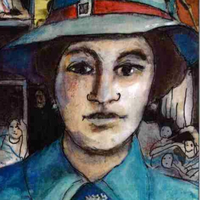
Lilian Helen Bowes Lyon (1895–1949) was a British poet. Biography Born 23 December 1895 at Ridley Hall, Northumberland. She was the youngest daughter of the Honourable Francis Bowes Lyon and was a first cousin of Elizabeth Bowes-Lyon, Queen Elizabeth the Queen Mother. During the First World War, Bowes Lyon helped at Glamis Castle (owned by her uncle) which became a convalescence home for soldiers. Her brother Charles Bowes Lyon was killed in the war on 23 October 1914, inspiring her poem “Battlefield” which was later published in Bright Feather Fading. After the Great War, Bowes Lyon studied for a time at the University of Oxford and then moved to London. She was independently wealthy. In 1929, she met the writer William Plomer CBE and through him, Laurens van der Post. She published two novels, The Buried Stream (1929) and Under the Spreading Tree (1931) but thereafter focused on poetry. Bowes Lyon published six individual collections with Jonathan Cape and a Collected Poems in 1948. Her “Collected Poems” contains an introduction by C. Day-Lewis, who noted the influences of Emily Dickinson, Hopkins and Christina Rossetti. Her verse appeared in many periodicals and anthologies including The Adelphi, Country Life, Kingdom Come, The Listener, The London Mercury, The Lyric (USA), The Observer, Orion, Punch, The Spectator, Time and Tide and “Poetry” (USA). During the Second World War, Bowes Lyon moved to the East End of London, where she used the Tilbury Docks unofficial air raid shelter and assisted with nursing the injured. She had several amputations due to thromboangiitis obliterans (Buerger’s Disease), losing toes, a foot, her lower legs and eventually both her legs below her hips. She returned to her home in Kensington and continued to write poetry despite the thromboangitis obliterans beginning to affect her hands. These poems, found amongst William Plomer’s papers at University of Durham, were published in “Uncollected Poems” by Tragara Press. She died on 25 July 1949.
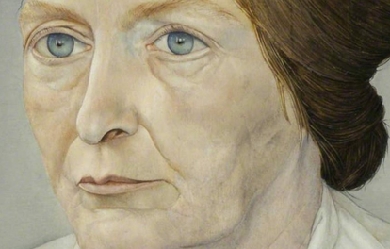
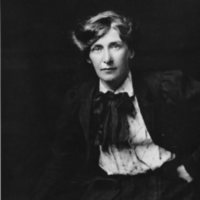
Cicely Mary Hamilton (née Hammill, 15 June 1872– 6 December 1952), was an English actress, writer, journalist, suffragist and feminist, part of the struggle for women’s suffrage in the United Kingdom. She is now best known for the play How the Vote was Won, which sees all of England’s female workers returning to their nearest male relative for financial support.. She is also credited as author of one of the most frequently performed suffrage plays, A Pageant of Great Women (1909), which first put Jane Austen on the stage as one of its “Learned Women.” Biography Cicely Mary Hammill was born in Paddington, London and educated in Malvern, Worcestershire. After a short spell in teaching she acted in a touring company. Then she wrote drama, including feminist themes, and enjoyed a period of success in the commercial theatre. In 1908 she and Bessie Hatton founded the Women Writers’ Suffrage League. This grew to around 400 members, including Ivy Compton-Burnett, Sarah Grand, Violet Hunt, Marie Belloc Lowndes, Alice Meynell, Olive Schreiner, Evelyn Sharp, May Sinclair and Margaret L. Woods. It produced campaigning literature, written by Sinclair amongst others, and recruited many prominent male supporters. Hamilton supplied the lyrics of “The March of the Women”, the song which Ethel Smyth composed in 1910 for the Women’s Social and Political Union. In the days before radio, one effective way to get a message out into society and to have it discussed was to produce short plays that could be performed around the country, and so suffrage drama was born. Elizabeth Robins’s Votes for Women and Cicely Hamilton and Christopher St. John’s How the Vote Was Won are two predominant examples of the genre. Hamilton also wrote A Pageant of Great Women, a highly successful women’s suffrage play based on the ideas of her friend, the theatre director Edith Craig. Hamilton played Woman while Craig played the painter Rosa Bonheur, one of the 50 or so great women in the play. It was produced all over the UK from 1909 until the First World War. Hamilton was a member of Craig’s theatre society, the Pioneer Players. Her play Jack and Jill and a Friend was one of the three plays in the Pioneer Players’ first production in May 1911. During World War I Hamilton initially worked in the organisation of nursing care, and then joined the army as an auxiliary. Later she formed a repertory company to entertain the troops. After the war, she wrote as a freelance journalist, particularly on birth control, and as a playwright for the Birmingham Repertory Company. In 1938 she was given a Civil List pension. Hamilton’s Theodore Savage (1922, vt. Lest Ye Die 1928) is a science-fiction novel about a Britain devastated by a war. In July 2017, the Finborough Theatre staged the first London production of Hamilton’s play 'Just to Get Married’ in over 100 years. It received positive reviews (4 stars) from The Times The Observer The Evening Standard and The New York Times The production was directed by Melissa Dunne and the cast included Tania Amsel, Nicola Blackman, Joanne Ferguson, Lauren Fitzpatrick, Jonny McPherson, Stuart Nunn, Philippa Quinn, Simon Rhodes and Joshua Riley.

Denis Florence MacCarthy (1817–1882) was an Irish poet, translator, and biographer, born in Lower O’Connell Street, Dublin. Life MacCarthy was born in Lower O’Connell Street, Dublin, on 26 May 1817, and educated there and at St Patrick’s College, Maynooth. He acquired an intimate knowledge of Spanish from a learned priest, who had spent much time in Spain, which he was later to turn to good advantage. In April 1834, before turning seventeen, MacCarthy contributed his first verses to the Dublin Satirist. He was one of a coterie of writers whose works appeared in the Nation, which had been started by Charles Gavan Duffy in 1842. Writing under the pseudonym “Desmond”, most of MacCarthy’s patriotic verse appeared in this organ. In 1846 he was called to the Irish bar, but never practised. In the same year he edited The Poets and Dramatists of Ireland, which he prefaced with an essay on the early history and religion of his countrymen. About this time he also edited The Book of Irish Ballads (by various authors), with an introductory essay on ballad poetry in general. His Ballads, Poems, and Lyrics, appeared in 1850, original and translated. His attention was first directed to Pedro Calderón de la Barca by a passage in one of Percy Bysshe Shelley’s essays, and from then on the interpretation of the “Spanish Shakespeare” claimed the greater part of his attention. The first volume of his translations, containing six plays, appeared in 1853, and was followed by further instalments in 1861, 1867, 1870, and 1873. His version of Daybreak in Capacabana was completed only a few months before his death. Until 1864 he resided principally on Killiney Hill, overlooking Dublin Bay. The delicate health of some members of his family then rendered a change of climate imperative, and he paid a prolonged visit to continental Europe. On his return MacCarthy settled in London, where he published– in addition to his translations– Shelley’s Early Life, which contains an account of that poet’s visit to Dublin in 1812. MacCarthy had already resettled in his native land of Ireland for some months, when he died on Good Friday, 1882 at Blackrock, Dublin. His poetical gifts were inherited by his daughter, who became a nun, and wrote as Sister Mary Stanislaus. His poems are distinguished by a sense of harmony and sympathy with natural beauty. Such poems as “The Bridal of the Year,” “Summer Longings” (alias “Waiting for the May”), and his long narrative poem, “The Voyage of St. Brendan,” are among his most enduring works. The last-mentioned, which paraphrases the “Ave Maria Stella” as the evening song of the sailors, is also marked by the earnest religious feeling which marked its author throughout life. But it is by his version of Calderon that he is considered to have won a permanent place in English letters. His success is sufficiently testified by George Ticknor, who declared in his History of Spanish Literature that MacCarthy "has succeeded in giving a faithful idea of what is grandest and most effective in [Calderon’s] genius... to a degree which I had previously thought impossible. Nothing, I think, in the English language will give us so true an impression of what is most characteristic of the Spanish drama, and of Spanish poetry generally.” Published works Below are lists of his published works, some of which are available on-line at Project Gutenberg (see Online works below). Poetry Poems Published in Dublin by M. H. Gill and Son in 1882 An extensive collection edited by the poet’s son. The Book of Irish Ballads Published in Dublin by James Duffy in 1846, revised in 1869. Ballads, Poems, and Lyrics, Original and Translated Published in Dublin by James McGlashan in 1850. The Bell-Founder, And Other Poems Published in London by David Bogue in 1857. Underglimpses, And Other Poems Published in London by David Bogue in 1857. Irish Legends And Lyrics Published in Dublin by McGlashan & Gill in 1858. Poems of Denis F. McCarthy [sic], with Life and Notes Published in Dublin and Cork by The Educational Company, Ltd., no date. Drama Dramas of Calderon, Tragic, Comic, and Legendary Published in London by Charles Dolman in 1853. Containing “The Constant Prince” ("El Principe Constante"), “The Secret in Words” ("El Secreto a Voces"), “The Physician of His own Honour” ("El Medico de Su Honra"), “Love after Death” ("Amar despues de la Muerte"), “The Purgatory of Saint Patrick” ("El Purgatorio de San Patricio"), and “The Scarf and the Flower” ("La Banda y la Flor"). Rebound with a foreword in 1886 for the Memorial Fund Committee. Love the Greatest Enchantment: The Sorceries of Sin: The Devotion of the Cross Published in London by Longtan, Green, Longman and Roberts in 1861. Containing (with original language texts) “El Mayor Encanto Amor, Los Encantos de la Culpa” (an “Auto Sacramental”), and “La Devocion de la Cruz.” Mysteries of Corpus Christi Published in Dublin by James Duffy in 1867. Containing “Balshazza’s Feast” ("La Cena de Balthasar") and “The Divine Philothea” ("La Divina Filotea"), two “Auto Sacramentales.” The Two Lovers of Heaven: Chrysanthus and Daria Published in Dublin by John F. Fowler in 1870. Containing Los dos amantes del cielo: Crisanto y Daria. Calderon’s Dramas Published in London by Henry S. King in 1873. Containing “Life is a Dream” ("La Vida es Sueño"), “The Wonder-Working Magician” ("El Magico Prodigioso"), and a new edition of “The Purgatory of St. Patrick” ("Purgatorio de San Patricio"). Daybreak at Capacabana (La Aurora en Copacabana) was completed shortly before the translator’s death. Biography The Poets and Dramatists of Ireland Published in Dublin by James Duffy in 1846. Shelley’s Early Life Published in London by John Camden Hotten in 1872. References Wikipedia—https://en.wikipedia.org/wiki/Denis_Florence_MacCarthy

* A creative minded Smart Girl.. * I do my thing and you do yours... I am not in this world to live up to your expectations, and you are not in this world to live up to mine. * You are you and I am I, and if by chance we find each other, then it is beautiful. If not, it cant be helped. * I am you; you are me. You are the waves; I am the ocean. Know this and be free, be divine.
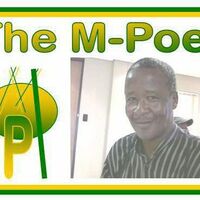
I am South African with 2 siblings, 3 daughters, two nephews, 3 nieces and 3 grandchildren. My poetry started in 1997 and I was published locally, nationally and internationally on the internet. I was nominated as a finalist in 2006/07 by The International Library of Poetry, Owings Mills, Maryland, USA. I have invented, written and developed a unique South African poem, The Elevta, which is presented here. I have been nominated Poet of 2013, South Africa, by The Words, Rhyme and Rhythm, in Nigeria!

Hello, my name is Georgia-lee but feel free to call me Gee. I'm 17 years old and I've been writing poetry from the age of 13. I love to write - it's a way of expressing who I am as a person, and the possibilities of these expressions are endless. I hope that you all enjoy my poetry and I'll endeavor to continue writing :)
"When something was translated, it was conquered." - Friedrich Nietzsche My name is Elżbieta Bujakiewicz, and I am a translator of English, Spanish and Polish. I am from Argentina and have Polish ancestry (which explains my passion for the Polish language and culture). I studied translation and linguistics, and I qualified as a literary and technical-scientific translator of English in 2021. Professionally, I dedicate myself to translation. I also proofread, write, and read extensively. Here, I will share poetry, stories, fragments, and narratives translated by me from authors whom I am passionate about reading, studying, and translating. As a professional translator and passionate about my work, I apply my experience and knowledge to each project. Humanities and literature, in general, are my specialty. I love what I do, and I do what I love 📖🌿❤️ 🇦🇷🇵🇱🇺🇸 📩: [email protected]
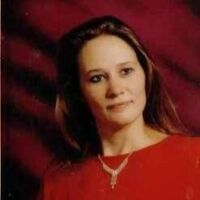
Hello my name is Corinna A. Rose. I was born in Missoula, MT in 1974. I am married and a mother of three children. As a young teen living in Arizona I had a hard time expressing myself so I took to writing as a way to release my emotions, I was fourteen when I wrote my first poem. As I grew older, I continued to express myself through poetry and then something deepened in me and I started writing short stories as an even better way of expressing what was hidden inside. Today at the age of forty, my favorite poets are still Edgar Allen Poe and William Blake. I never shared any of my writings until my first book, Endless Love, was published in 2005 although I have not published or shared anything of my writings since then, until now. In my spare time I am a crafter making handcrafted items and taking them to the local craft bazaars but my favorite past time of all is sitting on the couch with my children, watching a movie and eating popcorn because: "Life in all it's forms is a precious gift."
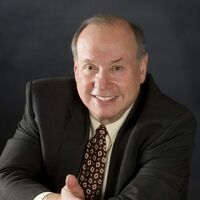
Ronald Harvey Wohl has been writing poetry since he was 12-years old following his father's death. His new book of poems, "Hope and Joy" will be published fall, 2013. Ron loves people. He sees the glass as always at least 3/4 full and believes that everyone can dream, strive to reach their dreams, make mistakes, learn from their mistakes and be the best they can be. He believes in helping people help themselves. Ron loves his children and grand children and believs there should be no impediments to each person success. Ron is a graduate of the George Washington University BA 1965, and attended the George Washington University Law School and the Masters in Business Administration Program at American University with as special focus in marketing, marketing research and management. Ron is a practicing applied psychological anthropologist with a focus in religion, witchcraft, sorcery, and spirituality, and introducing change into business and other cultures. He founded and was CEO of a management communications consulting for 35 years which specialized in introducing plain English into all forms of communication to produce clarity and promote ease of operation. Ron is a Certified Management Consultant and mentor of consultants. Ron has had an extremely active political career in business and community leadrership, including running for the Maryland Legislature, being appointed as member and then chair of the Montgomery County, MD Commission on the Humanities for 9-years, being elected to the boards of directors of several parent and school organizations, homeowner associations, civic associations and other business and professional associations. He is married 48-years to his college sweetheart, has two talented and successful daughters, sons-in law, and 3 wonderful grandchildren. Ron was born in Washington, DC and hopes to retire there as well. He vacations in the mountains of West Virginia and travels the world.


Hi, I am Gal Gadot. I have been working as a product manager at Rananjay Exports for more than five years. Rananjay Exports is a worldwide manufacturing and wholesaling company based in India that deals in Opal jewelry and other 200 plus varieties of gemstones. Our jewelry is made with genuine and ethically sourced gemstones that are loved by jewelry resellers worldwide. Bearing the signature of Rananjay Exports, each jewel is created with good quality. Moreover, We are dedicated to giving exclusive member benefits to our customers with a memorable shopping experience.
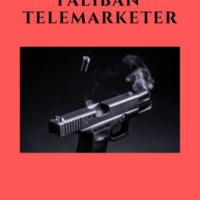
A TRUE piece of trash! Download my novel: "Taliban Telemarketer" OUT NOW! Google it!!! What the readers are saying: "EAT SHIT AND DIE!" "GO AWAY!" "The rantings of a madman!" "Reading this can easily be compared you sitting on the curb, sweating your tits off when you get bitten by a mosquito that then gets eaten by a mangy cat ... only to see the cat get viciously attacked by a pack of wild pit bulls and torn to shreds. The leader of the pack gorges himself on the cat's carcass, making him too slow to get out of the way of the 18 wheeler that crushes him into an unrecognizable stain on the highway ... you are watching crows pick at the mess when your trailer trash mom calls out to tell you that dinner is ready. Her shrill voice startles the crows, who scatter in a rush, but not before one of them shits right into your mouth - and you swallow knowing that it has more taste than this CRAPPY post from KIM CANCER." "i'm not sure what i just read. it seemed the ramblings of a crack addict or a conspiracy theorist coming off a 4 day bender. exactly what you were trying to say is a mystery and please for the love of God destroy your computer seek counseling and try to publish something slightly more coherent in the future. may God have mercy on your soul. amen." "You cured my autistic cat! God Bless You!"


